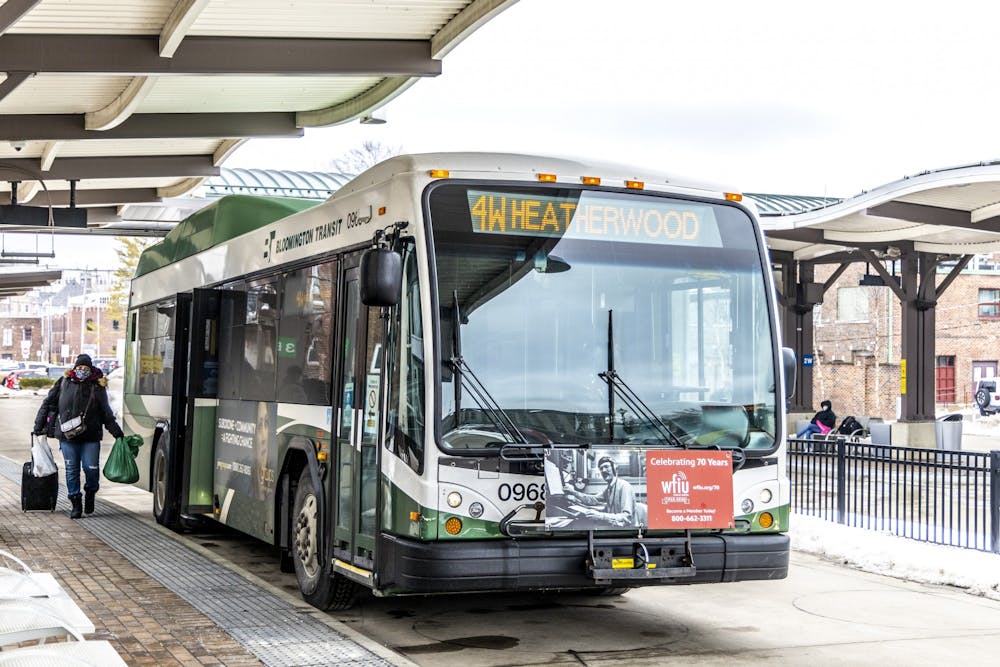Potential changes to Bloomington Transit’s bus routes, including access to the new Regional Academic Health Center, were reintroduced to the Bloomington Transit Board of Directors on Feb. 16.
In fall 2018, Bloomington Transit and IU Campus Bus partnered with Foursquare ITP, a transport planning firm, to study route networks, population data, community input and other factors to identify strengths and weaknesses within Bloomington’s transit system. According to Bloomington Transit’s website, the goal of the Route Optimization study was to learn how to make public transportation more effective and convenient.
But on April 21, 2020, Bloomington Transit announced that most of the recommended changes to bus services would be postponed due to potential funding cuts on the state, local and federal level as a result of the COVID-19 pandemic.
Bloomington Transit General Manager Lew May said discussions on proposed service changes were resumed with the Board of Directors on Feb. 16.
“We wanted to restart the discussion with the board and see if there's any questions that they may have,” May said. “And also bring up the questions that we as a staff had, in terms of the possibility of implementing the service changes that had been proposed.”
Before implementation of service changes could be considered, May said questions about when in-person classes would resume at IU and how many new drivers were needed to resume full services needed to be answered.
“We still have to do some additional analysis, and research, but we do want to continue the discussion with our board.” May said.
May said the changes would affect every route and service to IU’s campus, particularly route 9. The proposal combines route 9 with route 3 and route 8 to create a single looped route that runs in both directions.
“The whole idea is to make using public transportation easier and more convenient for more people.” May said.
Consultants from Foursquare ITP initially presented recommendations on how to improve bus services in Bloomington in June 2020.
Some of the recommendations include changes to bus routes, such as significant changes to the structure of IU campus bus routes, more bi-directional service for IU campus buses, service to previously unserved locations and more efficient routes.
The recommended service scenario, the proposed service changes for all nine Bloomington Transit routes, included information from both the Bloomington Route Optimization study and staff input, according to the Bloomington Transit website.
Recommendations would also make IU campus bus services more effective with four core routes and replace the Night Owl route with app-based, on-demand service on Friday and Saturday nights, according to the report.
The Campus Bus Service is run by the university and IU makes decisions for it, not Bloomington Transit, May said.
The final report also included long-range recommendations that focus on capital improvements and new technology such as bus stop and corridor improvements. Long-range recommendations also included innovative services and technology programs. Funding sources had not been identified when the report was published.
May said before implementation of changes to routes and schedules could even be considered there would need to be a five to six month period of time to educate the public, hire and train drivers and relocate bus stops and passenger shelters.
Sarah Wray, a member of the Bloomington community, primarily uses the transit system to get to work and drop her daughter off at daycare. Wray said she was aware that Bloomington Transit would be making changes to Route 2, the route she lives on and the route exempt from postponed changes, and she now has to walk a bit longer to get to the bus.
Wray said she believes that the changes to Bloomington Transit bus routes would have a positive effect because people would be more inclined to take the bus due to no longer having to walk as far.
“People will have a chance to not have to walk as far to the bus, so they’ll be more inclined to take the bus, instead of taking an Uber, cab or something like that,” Wray said.
May said no decisions have been made yet and the changes are not imminent. The Bloomington Transit Board of Directors will meet again March 16.




